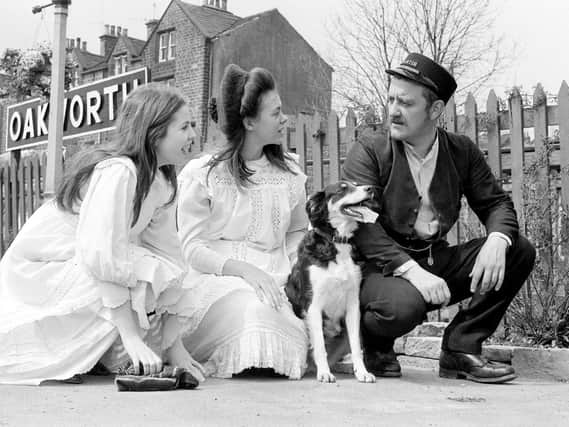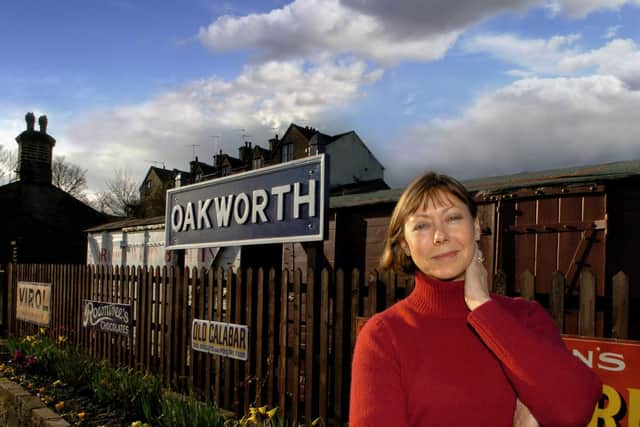Why The Railway Children film still pulls at our heartstrings 50 years on


On the platform of a station in Yorkshire set during Edwardian times, a thick cloud of steam slowly clears and a tear-jerking reunion takes place between father and daughter, the daughter crying: “Daddy, my daddy!”
The undisputed high point of The Railway Children, made by Lionel Jeffries, may have been filmed 50 years ago this year but many would say its raw emotion has never been surpassed.
Advertisement
Hide AdAdvertisement
Hide AdThe film is based on Edith Nesbit’s book, written and based in the early 1900s. It relates the adventures of Roberta (Bobbie), Peter and Phyllis, forced to leave their comfortable London home when their father, who works at the Foreign Office, is imprisoned after being wrongly accused of selling state secrets.


The children and their mother are thrown into poverty and move to a cottage deep in the countryside but close to a railway line that soon draws their interest and becomes central to their lives.
The classic 1970 film was set around the Keighley & Worth Valley Railway and captured an ideal of Edwardian life and childhood innocence. It remains richly tender, warm and nostalgic now.
It was a clear triumph for the British film industry. Jenny Agutter, who played Roberta, says that, at the time of shooting, she would have been surprised to be looking back at the film 50 years later.
Advertisement
Hide AdAdvertisement
Hide Ad“Back then, I never imagined the film would remain a favourite for so many people for so many years,” she reflects. “I realise now that Lionel Jeffries made a timeless masterpiece. He tells Edith Nesbit’s story with great simplicity, focusing very much on the children’s point of view.
“I think it caught the desire in an audience to be taken back to a less complicated time. Interestingly, when we were making the film, I personally thought of the Edwardian period as almost ancient history. I was 17 and into the world of pop art, Minis, The Beatles, the Rolling Stones and the space age. Only now, 50 years on, does it sink in that it was set just over 60 years before we were filming – hardly much different to the gap between the film and now.
“One special thing about it, I thought, was the film managed to stop just short of being sentimental. When father comes back and is at the station, the scene is stretched out and has you on the edge of your seat, but it’s not mawkish. The moment with ‘Daddy, my daddy!’ was just wonderful.”
Other actors who starred in the film have also reflected on the reasons for its success. At a special screening of the film ten years ago to mark its 40th anniversary, Sally Thomsett, who played Phyllis, said: “There is nothing to dislike about this film. It doesn’t matter how old you are, how sensitive you are, there’s nothing here to offend anybody.”
Advertisement
Hide AdAdvertisement
Hide AdAgutter tells me she has many fond memories of the film. “When we were working on the film, it did feel kind of blessed. It was early spring and we had gorgeous weather.
“Lionel Jeffries treated Sally, Gary [Gary Warren, who played Peter] and myself very much as children. If we did well, he would give us half a crown. Sally wasn’t sure that would pay for the drinks she wanted in the pub later!” Considering Sally was playing an 11-year-old, this might sound odd but Sally was actually 20 at the time, three years older than Jenny, who played her elder sister.
Jenny pays special tribute to Bernard Cribbins, who played Perks, the down-to-earth and fiercely proud station porter. “I loved the character of Perks,” she says. “Bernard played him brilliantly. He managed to make you laugh while also expressing the pride and pain of the character. There were lots of layers to his performance.
"Bernard was a joy to work with and had a never-ending supply of stories, poems and songs with which he entertained us. The real star of the film, however,” she insists, “was the railway itself.”
Advertisement
Hide AdAdvertisement
Hide AdCertainly being the backbone of that film has been a huge bonus for the Keighley & Worth Valley Railway.
Jim Shipley, a volunteer on the railway for 36 years and author of The Making of the Railway Children, which gives fascinating recollections of how the film was made, says its impact on the railway has been enormous.
“When it was made,” he says, “the railway was still finding its feet. The boost in traffic the film created was so great that a passing track loop had to be created to enable additional trains to operate.
"Fifty years on, many people still visit the railway, and Oakworth Station in particular, to follow in the footsteps of Roberta, Peter and Phyllis. Perhaps the most poignant memory for me was a young girl who got off the train at Oakworth and actually kissed the platform.”
Advertisement
Hide AdAdvertisement
Hide AdAnd those who work on the railway are quite clear in their minds why The Railway Children has become such a classic family film. Jim says: “Its continuing appeal was once summed up by a local villager, who told us: ‘You know what’s so great about that there film? It’s got no drugs, no drinkin’, no sex, no bad language, and no folk runnin’ round wi’ no clothes on.’ And he was spot on.”
It has obviously been a difficult year for all tourist attractions, including heritage railways. The Keighley & Worth Valley Railway has managed to stay afloat only through fund-raising activities, which have raised more than £350,000 since March. Services have continued to run when possible, following coronavirus safety guidelines, though it may be a while before full normal services can be resumed.
Celebrations had been planned to mark the anniversary of the film but these have been put on hold until possibly next May, when it is hoped the legendary Green Dragon locomotive – well known to all those who have watched the film – will be rolled out from the restoration shed sporting the classic green paint it did all those years ago.
Hopefully by then visitors will be able to once again fully explore the railway and all its Edwardian magic by taking one of the Railway Children Walks from Haworth Station.
Advertisement
Hide AdAdvertisement
Hide AdThey take in a host of locations used during filming, including, at Oxenhope, the family home Three Chimneys (actually Bents House) and at Haworth, the doctor’s house (the Brontë Parsonage), the butcher’s shop (now the tourist information centre), the ironmonger’s shop (a cottage off Main Street) and also the base for the film crew (the Fleece Inn).
But followers of the film will probably want to spend most time at Oakworth Station. It was here, of course, that the famous home-coming scene was shot.
On the face of it, the station, with Perks’ cottage next door, seems to be just as the film left it 50 years ago. It does not take much at all to imagine Jenny Agutter joyfully running along the platform into the arms of her much-loved and dreadfully missed father. If you are going to see the spot for yourself, you should pack some tissues.
For more details visit www.kwvr.co.uk or call 01535 645214 for information about services and coronavirus safety on the Keighley & Worth Valley Railway.
Comment Guidelines
National World encourages reader discussion on our stories. User feedback, insights and back-and-forth exchanges add a rich layer of context to reporting. Please review our Community Guidelines before commenting.